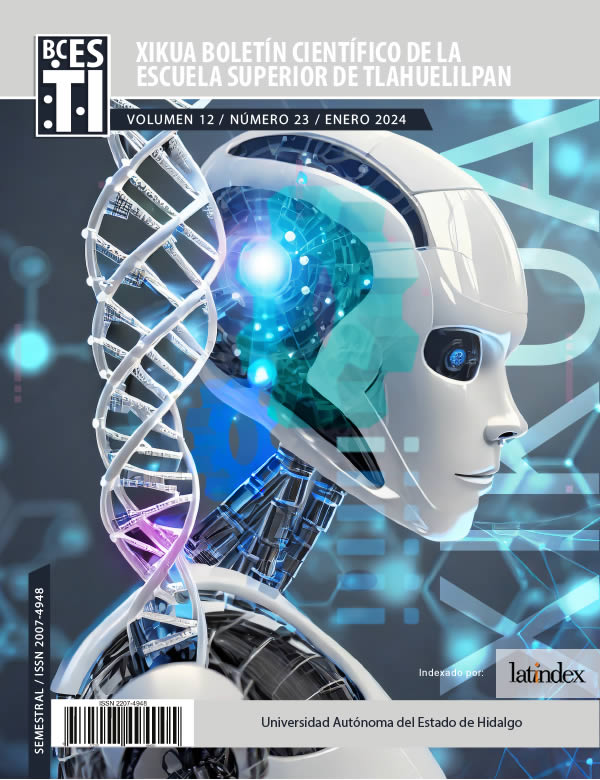Manipulation of an omnidirectional robot with facial gestures
Abstract
This article describes the state of the art, showing the advances in research on different wireless electroencephalogram (EEG). It also shows a prototype software that interprets the brain signals that come from the Emotiv Epoc headband, this process is called Brain Computer Interface (BCI) that solves the problem of identifying EEG signals. The software is designed in Matlab that interprets brain signals, these signals can be saved or manipulated in real time, to move an omnidirectional robot with facial gestures. The software converts brain signals to voltage to manipulate external manipulator devices. Currently this work is in the experimental testing phase in humans and the non-invasive signal acquisition method is used; It is expected to extend this work to support people who have permanent or temporary paralysis in the lower limbs, which also cause other types of psychological problems such as depression due to the use of a wheelchair and the impact generated by not being able to move. autonomously from one place to another without the help of a third person.
Downloads
References
Chávez-Saenz V., Jiménez-González F., Torres-Ramírez D., and Pérez-Klapez Ch., “Estudio de las señales EEG generadas a partir de expresiones faciales,” Revista de Investigación y Desarrollo, vol. 2, no. 6, 2016.
Hornero G., Font E., Tejedo J., and Casas o., “Interfaz gestual para el acceso a plataformas digitales y control de plataformas para el ocio,” VI Congreso Internacional de Diseño, Redes de Investigación y Tecnología para todos (DRT4ALL), 2015.
B. Graimann, B. Allison, and G. Pfurtscheller, “Brain–Computer Interfaces: A Gentle Introduction,” 2009, pp. 1–27. doi: 10.1007/978-3-642-02091-9_1.
Chávez-Saenz V., Jiménez-González F., Torres-Ramírez D., and Pérez-Klapez Ch., “Estudio de las señales EEG generadas a partir de expresiones faciales,” Revista de Investigación y Desarrollo, vol. 2, no. 6, 2016.
Hornero G., Font E., Tejedo J., and Casas o., “Interfaz gestual para el acceso a plataformas digitales y control de plataformas para el ocio,” VI Congreso Internacional de Diseño, Redes de Investigación y Tecnología para todos (DRT4ALL), 2015.
B. Graimann, B. Allison, and G. Pfurtscheller, “Brain–Computer Interfaces: A Gentle Introduction,” 2009, pp. 1–27. doi: 10.1007/978-3-642-02091-9_1.
Freire Carrera F., Maila Andrango E., Chadrina O., and Drozdov V., “Diseño de sistema para controlar una silla de ruedas mediante señales eléctricas cerebrales,” Medisur, 2019.
Cunalata Velasco W. D., “Sistema de manipulación y monitoreo del robot scorbot mediante señales electroencefalográficas (EEG),” Universidad Técnica de Ambator, Ecuador, 2021.
D. Pawuś and S. Paszkiel, “BCI Wheelchair Control Using Expert System Classifying EEG Signals Based on Power Spectrum Estimation and Nervous Tics Detection,” Applied Sciences, vol. 12, no. 20, p. 10385, Oct. 2022, doi: 10.3390/app122010385.
Vaca Pérez J. D., “Transporte unipersonal motorizado para personas con Paraplejia,” Pontificia Universidad Católica del Ecuador, Ecuador, 2021.
Investigación Científica, El Cerebro. Barcelona, 1986.
E. M. Gordon et al., “A somato-cognitive action network alternates with effector regions in motor cortex,” Nature, vol. 617, no. 7960, pp. 351–359, May 2023, doi: 10.1038/s41586-023-05964-2.
Schalk G., “Brain-Computer Interfaces Using Electrocorticographic Signals,” Leuthardt E., vol. 4, 2011.
http://www.neurosky.com, “neurosky.”
Emotiv Epoc+, “www.emotiv.com.”
Lun-De Liao et al., “Biosensor Technologies for Augmented Brain–Computer Interfaces in the Next Decades,” Proceedings of the IEEE, vol. 100, no. Special Centennial Issue, pp. 1553–1566, May 2012, doi: 10.1109/JPROC.2012.2184829.
R. A. Ramadan and A. V. Vasilakos, “Brain computer interface: control signals review,” Neurocomputing, vol. 223, pp. 26–44, Feb. 2017, doi: 10.1016/j.neucom.2016.10.024.
L. F. Nicolas-Alonso and J. Gomez-Gil, “Brain Computer Interfaces, a Review,” Sensors, vol. 12, no. 2, pp. 1211–1279, Jan. 2012, doi: 10.3390/s120201211.
Regents of the University of California, “EEGLab,” https://sccn.ucsd.edu/eeglab/index.php.
Copyright (c) 2024 Jorge Gudiño Lau, Ximena Gonzalez-Reyes, Saida Charre-Ibarra, Janeth Alcalá-Rodríguez, Miguel Durán-Fonseca, Gabriela Lopez-Torres

This work is licensed under a Creative Commons Attribution-NonCommercial-NoDerivatives 4.0 International License.









